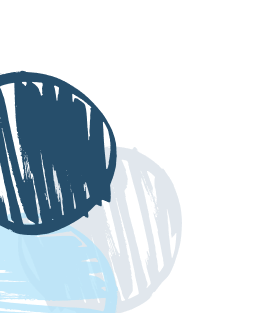

Practice with Conditionals Part 1

Click to Start Lesson
Practice with Conditionals Part 1
45min
Students will be able to explain what a conditional is in programming and create a program that uses conditionals.
Prerequisites
_Computer Science:_ Students should have experience with the if/then conditional.
Lesson Plan
Lesson Slides
Lesson Standards
| Standard | Description |
|---|---|
| AZ CS K-5: 3.AP.C.1 | Create programs that include sequences, events, loops, and/or conditionals. |
| AZ CS K-5: 4.AP.C.1 | Create programs that include sequences, events, loops, and/or conditionals. |
| AZ CS K-5: 5.AP.C.1 | Create programs that include sequences, events, loops, and conditionals. |
| CA CS K-5: 3-5.AP.12 | Create programs that include events, loops, and conditionals. |
| CSTA 1B: 1B-AP-10 | Create programs that include sequences, events, loops, and conditionals. |
| FL CS 3-5: SC.35.CS-CS.2.6 | Write an algorithm to solve a grade-level appropriate problem (e.g., move a character through a maze, instruct a character to draw a specific shape, have a character start, repeat or end activity as required or upon a specific event), individually or collaboratively. |
| FL CS 3-5: SC.35.CS-CP.2.3 | Create a program using arithmetic operators, conditionals, and repetition in programs. |
| GA CS 3-5: CSS.CT.3-5.5.4 | Create programs that include sequences, events, loops, conditionals, and variables. |
| IL 3-5: 3-5.AP.10 | Create programs that include sequences, events, loops, and conditionals. |
| IN 3-5 CS 2023: 3-5.PA.2 | Design programs that incorporate sequences, events, loops, and conditionals. (E) |
| MS CS 3-5: AP.1B.3 | Create programs that include sequences, events, loops, and conditionals. |
| NE K-5 Technology: NE.K5.59 | Write programs using visual (block-based) programming languages (scratch). |
| NJ CS 3-5: 8.1.5.AP.3 | Create programs that include sequences, events, loops, and conditionals. |
| NV CS K-5: 4.AP.C.1 | Develop programs that include sequences, events, loops, and conditionals. |
| NY CS K-6: 2-3.CT.8 | Identify steps within a task that should only be carried out under certain precise conditions. |
| NY CS K-6: 2-3.DL.4 | Use a variety of digital tools and resources to create digital artifacts. |
| NY CS K-6: 4-6.CT.8 | Develop algorithms or programs that use repetition and conditionals for creative expression or to solve a problem. |
| NY CS K-6: 4-6.DL.4 | Use a variety of digital tools and resources to create and revise digital artifacts. |
| OK CS 3-5: 3.AP.C.01 | Create programs using a programming language that utilize sequencing, repetition, conditionals, and variables to solve a problem or express ideas both independently and collaboratively. |
| OK CS 3-5: 4.AP.C.01 | Create programs using a programming language that utilize sequencing, repetition, conditionals and variables using math operations manipulate values to solve a problem or express ideas both independently and collaboratively. |
| OK CS 3-5: 5.AP.C.01 | Create programs using a programming language that utilize sequencing, repetition, conditionals, event handlers and variables using math operations to manipulate values to solve a problem or express ideas both independently and collaboratively. |
| RI CS K-5: 1B-CT-C-1 | Create programs that combine sequences, loops, conditionals, and/or events. |
| TN CS K-5: 3.CCP.4 | Using a block of code or script from a previous program, identify the control structures in the algorithm such as loops and/or conditionals in the code. |
| TN CS K-5: 4.CCP.4 | Construct an algorithm to solve a problem that includes control structures such as loops, event handlers, and conditionals collaboratively with or without a computing device. |
| TN CS K-5: 5.CCP.4 | Create an algorithm which includes control structures to solve a problem using visual block-based and/or text based programming language both collaboratively and individually. |
| TX K-5 CS: 3.2.B | use a design process to create programs that include sequences, loops, and conditionals to express ideas or address a problem. |
| TX K-5 CS: 4.2.B | Use a design process to create programs that include sequences, loops, and conditionals to express ideas or address a proble |
| TX K-5 CS: 5.1.B | identify patterns in real-world problems and make predictions based on the pattern |
| TX K-5 CS: 5.2.B | use a design process to create block-based programs that include sequences, loops, conditionals, and events to solve an everyday problem |
| UT CS K-5: 3.AP.1 | Create programs that include events, sequences, loops, and simple conditionals to express ideas or address a problem. |
| UT CS K-5: 4.AP.2 | Create programs that include events, loops, and conditionals. |
| UT CS K-5: 5.CT.1 | Develop algorithms in computer programs to solve problems, including unique and repeated sub-tasks within a larger program. |
| WI CS 3-5: AP1.a.4.i | Construct and execute algorithms (sets of step-by- step instructions), which include sequencing, loops, and conditionals to accomplish a task, both independently and collaboratively, with or without a computing device. |
| WY CS 3-5: 5.AP.C.01 | Using grade appropriate content and complexity, create programs that include sequences, events, loops, and conditionals, both individually and collaboratively. |




